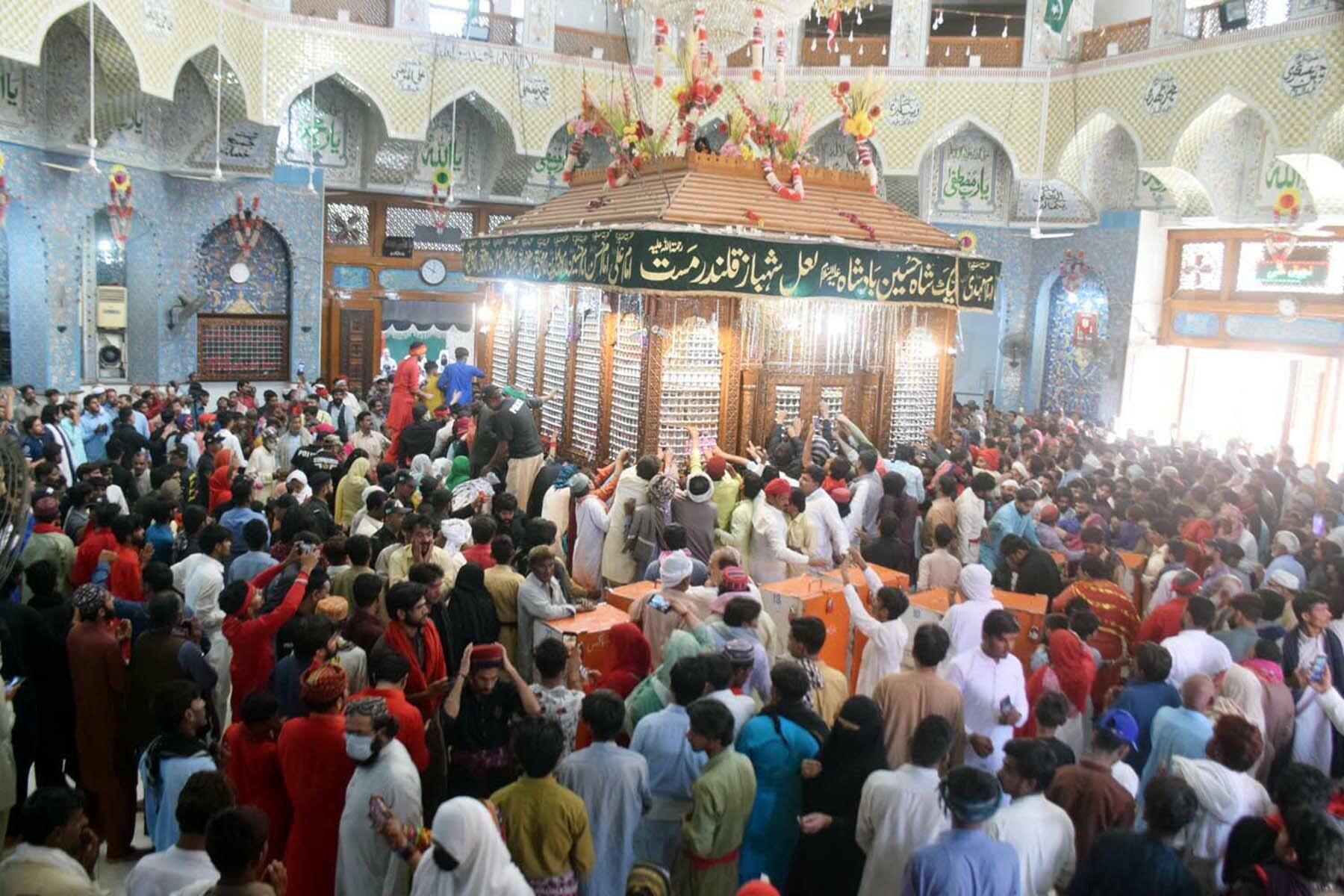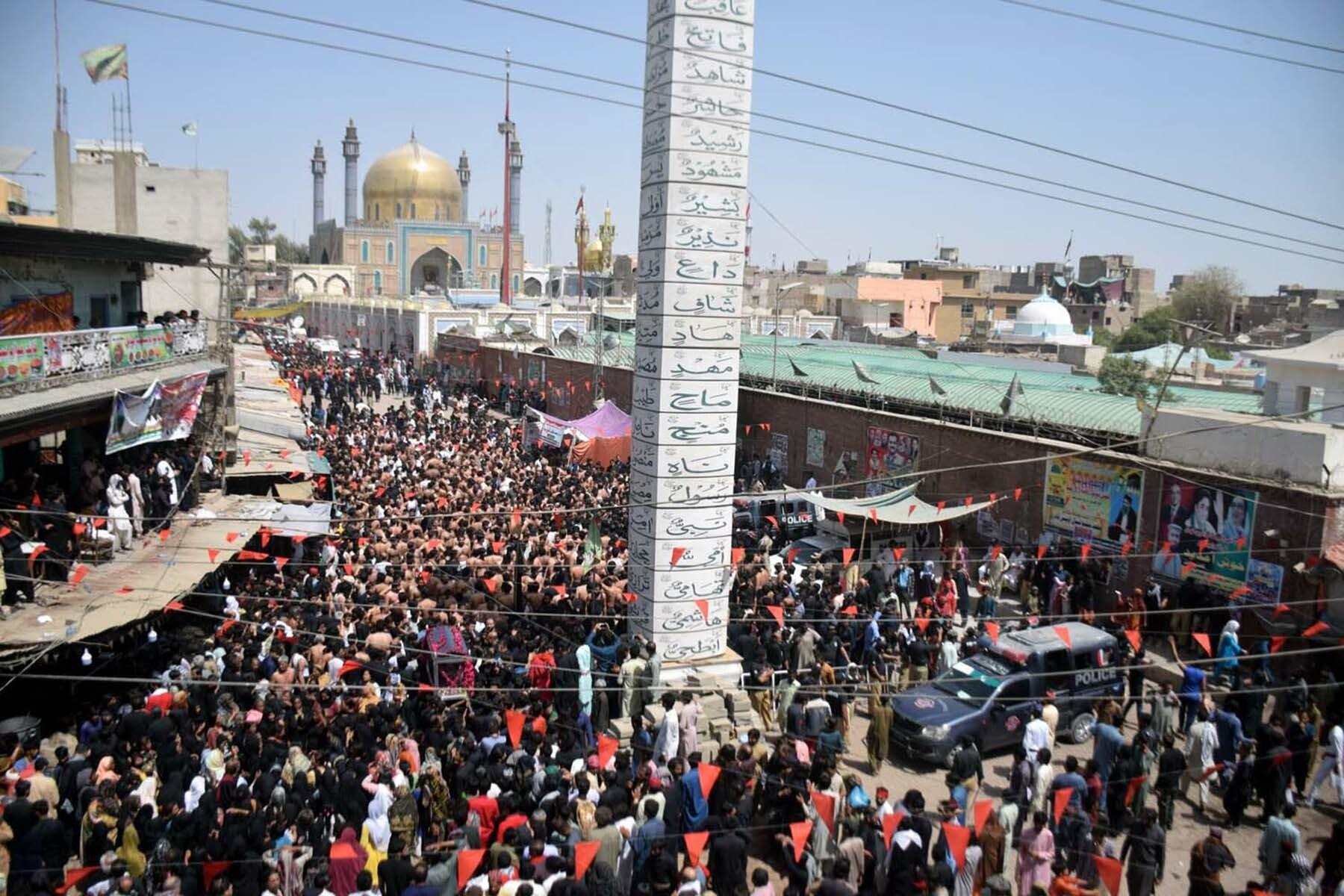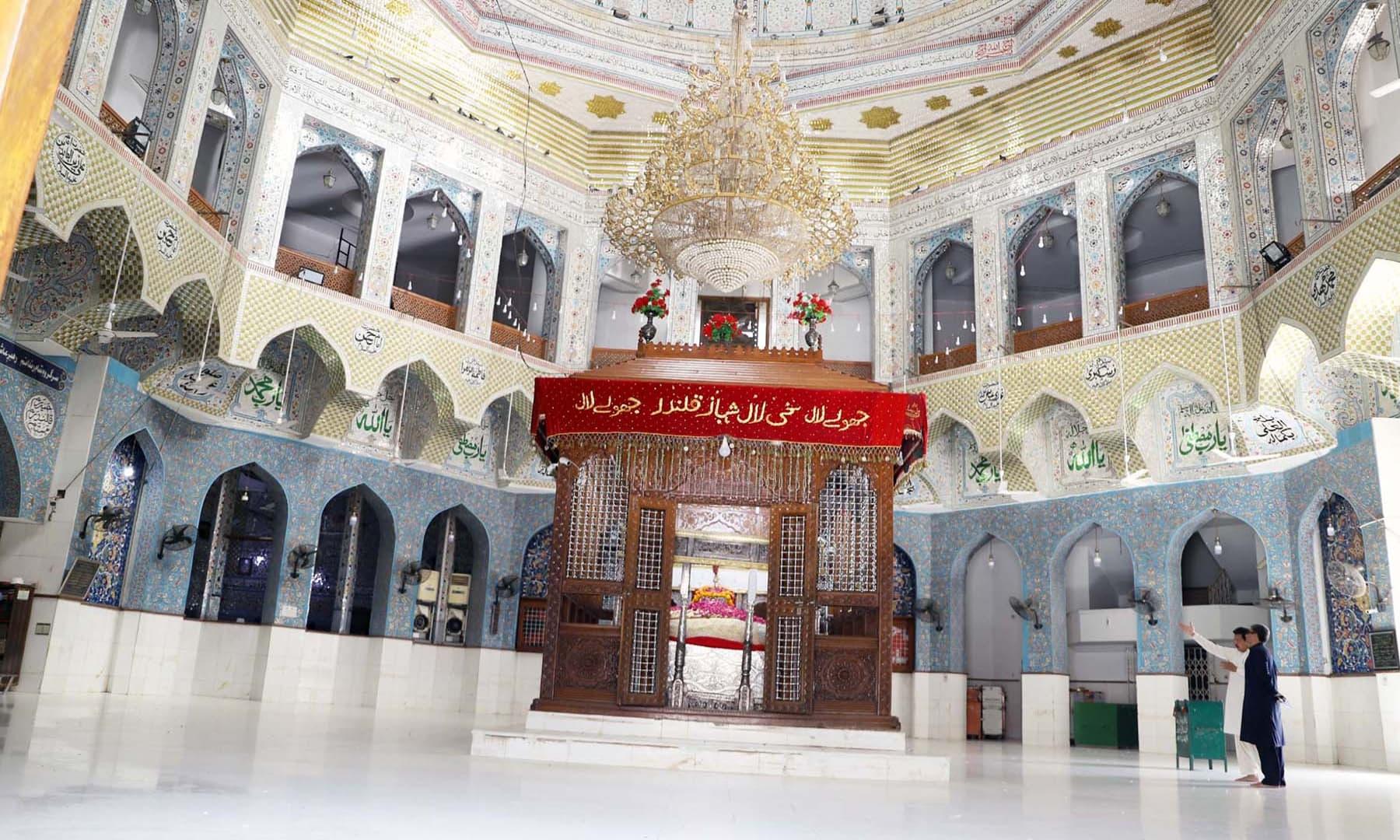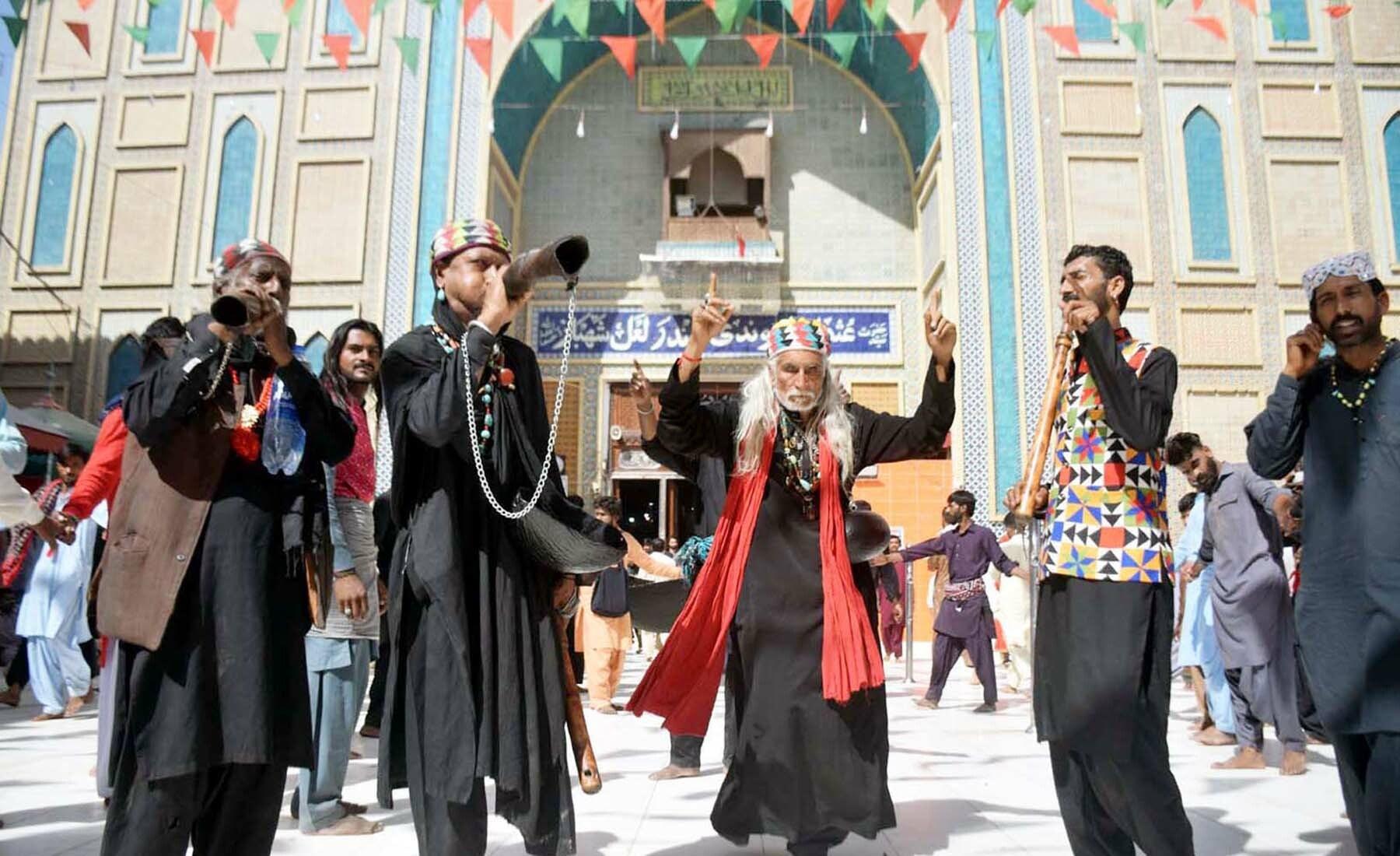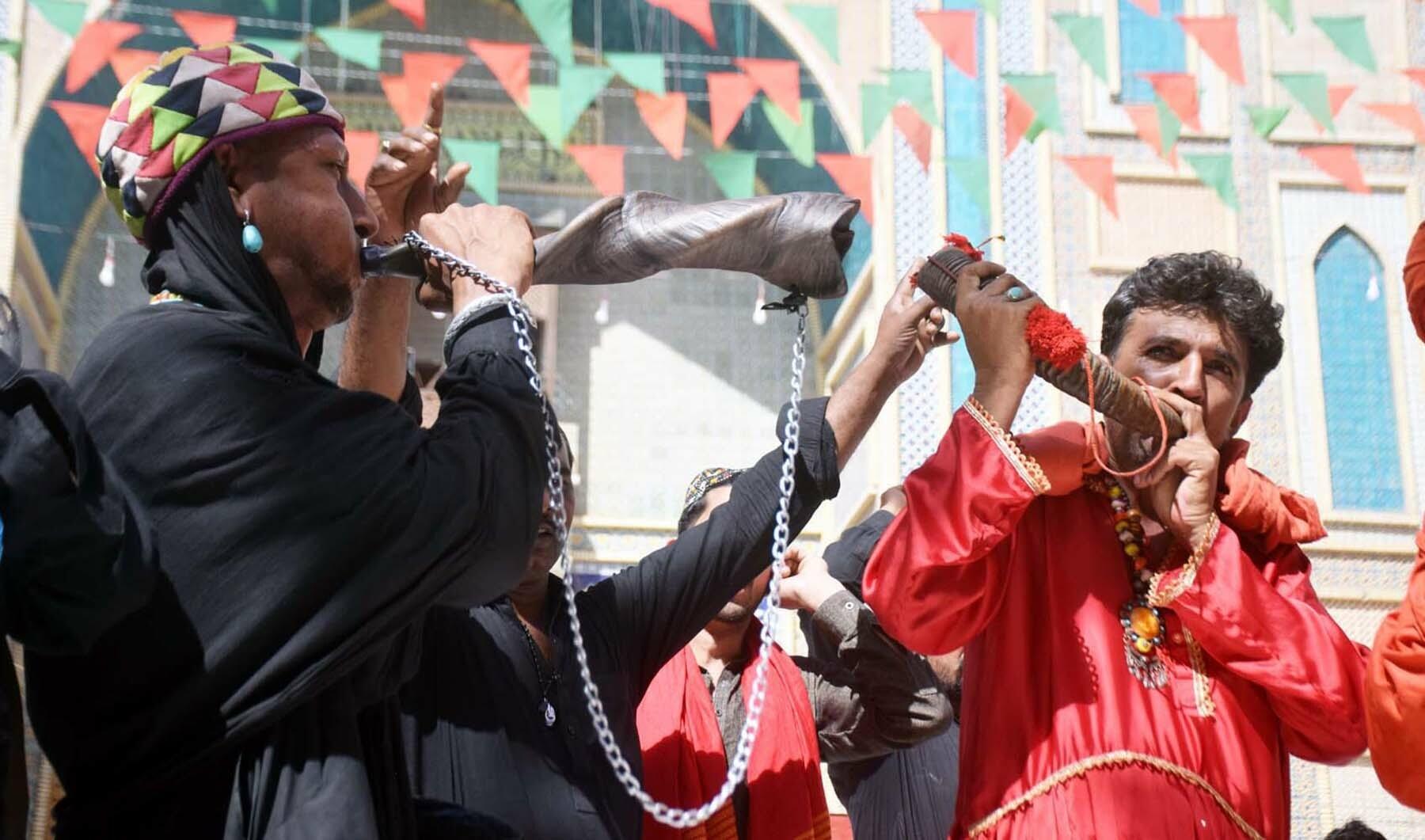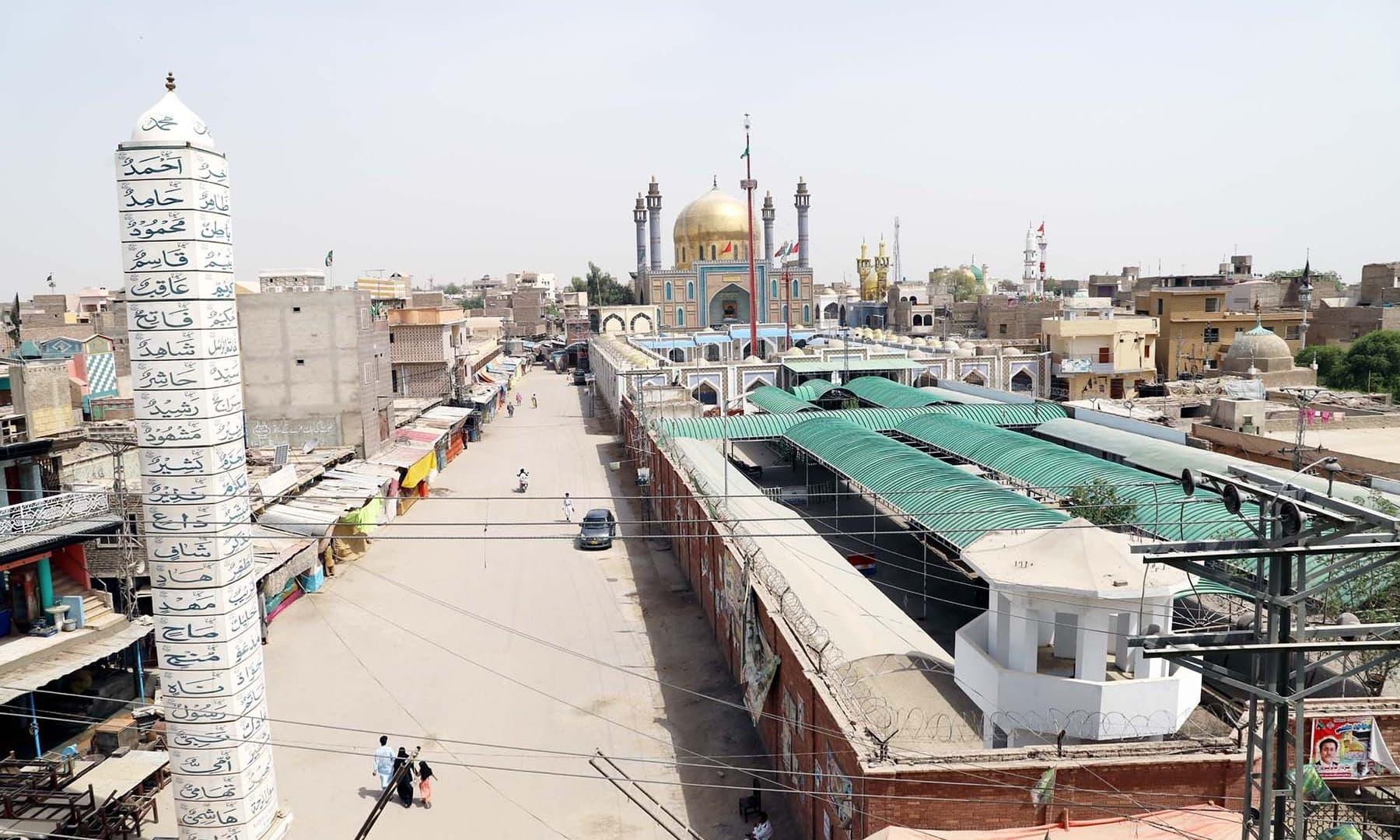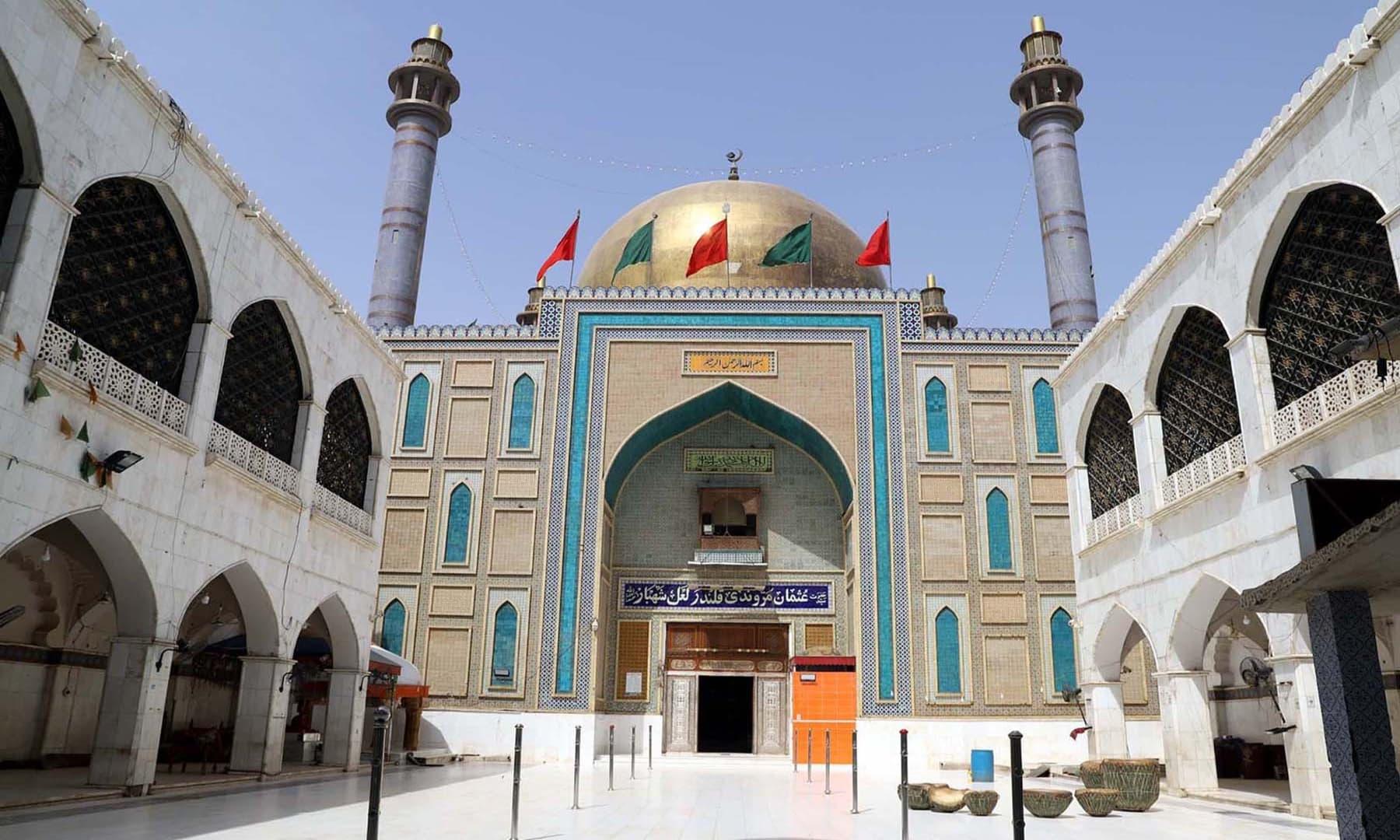Urs of Hazrat Usman Marwandi, also known by his spiritual title Qalandar Lal Shahbaz, attracts millions from across Pakistan — mainly from Punjab — and other parts of the world, Dawn.com reported.
In 2020 and 2021, a limited number of devotees and officials were allowed to get together inside and outside the shrine with strict adherence to Covid-19 protocols. The traditional and religious rituals were also scaled down to only dhamal, rendition, and recitals by small groups of devotees.
It has been Naqvi's routine for the last 15 years to serve langar (food) among devotees thrice a day — breakfast, lunch, and dinner. The niaz (food served in the name of God) is distributed among around 200 people.
Every year, he reaches Sehwan a couple of days before Qalandar’s urs.
Naqvi's menu comprises halwa puri for breakfast, mutton biryani for lunch and in dinner, the devotees devour qorma. “A cook accompanies me, while goats are purchased from Sehwan’s market and rest of the commodities are stocked before urs begin.”
Sehwan — a small town around 130km northwest of Hyderabad on the right bank of Indus River — is witnessing brisk activities this year.
Shopkeepers in Sehwan have decorated their shops — an annual practice before the commencement of urs. Visitors remain busy in shopping, some purchasing pictures of holy personalities that were sold in the narrow streets behind Qalandar's shrine.
Men and women full of energy thronged the shrine while devotees performed dhamal exuberantly at Qalandar's urs.
His devotees are usually dressed in red-coloured frock-style attire that remains their hallmark. They perform dhamal at fixed timings in the shrine’s courtyard, also known as dhamal court, twirling in trance for several minutes.
People with different religious beliefs visit the shrine throughout the year, with their numbers swelling around urs celebrations. Bare-footed men and women of all ages keep thronging Qalandar’s abode as the temperature gradually starts soaring in March.
Many perform dhamal in groups outside the dome while others struggle to enter the shrine with ‘bolo bolo mera sohna Lal Qalandar mast” cries. Others keep producing sounds of horns from a seashell-like object inside the shrine.
“I have inherited this affection for Qalandar as a legacy from my ancestors,” shared a young woman named Gul Zareen, who arrived from Multan. She will return to Punjab after paying her respects. “To be here every year gives me solace,” she said.
Qalandar Lal Shahbaz, it is said, used to perform dhamal as a tribute to the martyrs of Karbala when he felt immersed in their love.
Hazrat Sayyid Usman Marwandi, popularly known as Lal Shahbaz Qalandar (لعل شھباز قلندر), was a Sufi saint and poet of present-day Pakistan and Afghanistan.
Lal Shahbaz Qalandar, although from Maiwand in Afghanistan, whose family came from Baghdad, settled in Sindh and helped many people in converting to Islam and was revered by the local Sindhi population. Lal Shahbaz Qalandar had also been reputed for performing many miracles and was seen as a very holy figure in Sindh.
Commemorating the saint's practice, men sporting beards, resplendent in their red-colored frocks and with twinkling anklets, perform dhamal in a trance. For them, having long hair and a begging bowl in hand is a way of showing deep affection.
Some beat their chest in the courtyard in memory of Hazrat Imam Hussain, the maternal grandson of Holy Prophet Muhammad (PBUH), women present nauhas (elegies) inside, while others only sit in awe of Qalandar whose shrine is a replica of Imam Ali Raza's shrine in Mashhad, Iran.
According to the spiritual order relating to Qalandar, those intending to pay their respects at the shrine have to first visit the tomb of Qalandar’s beloved — Sakhi Bodla Bahar. Bahar was the most trustworthy servant of Qalandar and many legends are attributed to him.
The shrine's staff closes the inner sanctum for the prescheduled formal opening ceremony on the morning of 18th Shabaan — the day urs begins. And when the doors open, one feels influenced by the spellbinding aura of mysticism upon entering the shrine.
However, all of this was lost when the coronavirus descended on Sehwan, as it did on the rest of the world.
Over the last two years, the sight of the deserted shrine felt painful to many.
An eerie silence prevailed around the shrine. All passages leading to it remained completely shut.
The shrine was closed in mid-March 2020 as a precautionary measure by the Sindh government, followed by a province-wide lockdown on March 23.

